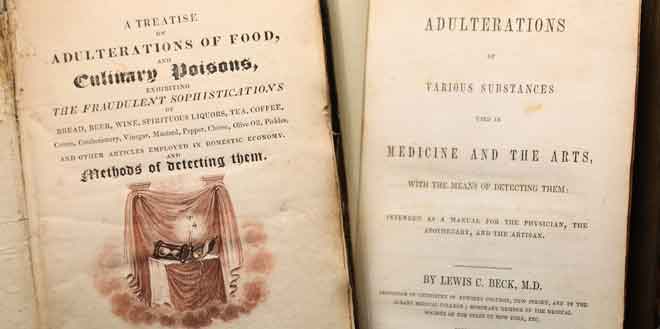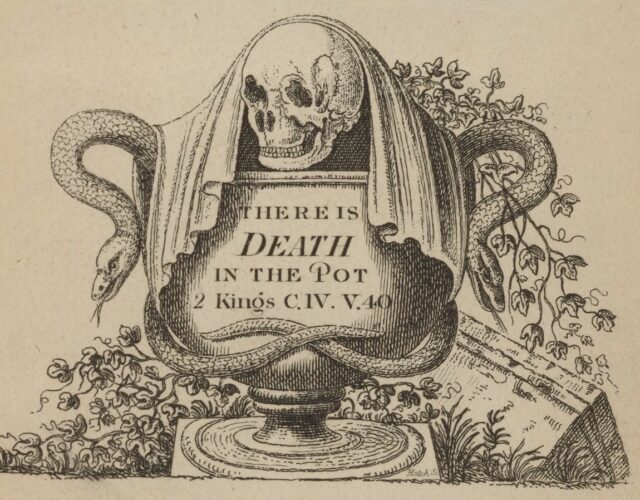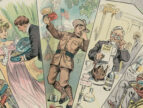Most urban dwellers in early 19th-century British cities found themselves increasingly separated from the countryside sources of their food and medicine—a consequence of the Industrial Revolution. In response, avaricious middlemen forming impersonal supply chains found myriad ways to debase and adulterate important products for profit: adding alum to make flour look whiter and more refined, for example, or using verdigris, a copper based pigment, to brighten the green appearance of pickles and vegetables.
Though the villain was often chemical, fortunately so was the hero—in the form of analytical chemists fighting to expose dishonest practices. The first to write forcefully on the topic of adulteration was Fredrick (a.k.a. Friedrich) Accum (1769–1838). His Treatise on Adulterations of Food, and Culinary Poisons, Exhibiting the Fraudulent Sophistications of Bread, Beer, Wine, Spirituous Liquors, Tea, Coffee, Cream, Confectionery, Vinegar, Mustard, Pepper, Cheese, Olive Oil, Pickles, and Other Articles Employed in Domestic Economy and Methods of Detecting Them (London, 1820) is recognized as the foundational work in the literature of food adulteration and detection.

Accum was a German expatriate who found considerable success in England writing and lecturing on chemistry and who also involved himself in various chemical industries, notably gas lighting. Incensed by what he saw as widespread, unconscionable fraud in the food and drug industries, he strove to reveal the fraudsters, publishing the names of those found guilty of adulteration and giving his readers chemical tests they could themselves use to assess the purity of their foodstuffs. His work shocked an unsuspecting public, and Treatise on Adulterations was almost immediately republished in Philadelphia (an edition also held by the Othmer Library). Unfortunately, Accum soon found himself enmeshed in a scandal of his own after being caught tearing pages out of books in lieu of copying their contents down at the Royal Institution in London, and he soon left England in disgrace.
Accum’s fall took a toll on the fight against adulteration. More than 25 years passed before the first book by an American appeared on the subject: Lewis C. Beck’s Adulterations of Various Substances Used in Medicine and the Arts with the Means of Detecting Them Intended as a Manual for the Physician, the Apothecary, and the Artisan (New York, 1846). Beck (1798–1853), a physician, served as professor of botany and chemistry at the Vermont Academy of Medicine from 1826 to 1832. He was also an inveterate traveler and today is better known for his labors on the 1836–1841 geological survey of New York, during the course of which he crisscrossed the state, traveling over 14,000 miles in 5 years.
After completing the survey Beck took up a professorship of chemistry and pharmacy at the Albany College of Medicine and also taught at Rutgers University. As a chemist and pharmacologist, Beck knew all too well the poor quality of drugs arriving at U.S. ports. Indeed, European producers facing scrutiny in their domestic markets created a whole class of adulterated products specifically for export. Soon after publication Beck’s treatise formed the foundation for America’s first attempt at regulating food and drugs, the Drug Importation Act of 1848.






